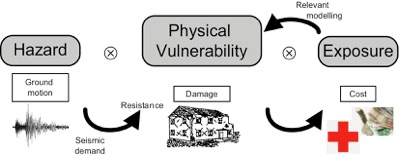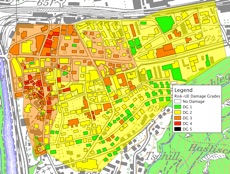Seismic risk assessment


Risk assessment is one of the final products of earthquake engineering. It can answer to questions of insurance companies and urban-planners: what amount of money should be forecasted in case of earthquake in the study-region ? What are the measures able to decrease the human and monetary cost of an earthquake ?
Insurance and reinsurance companies base their forecast on observed losses. However, earthquakes are too rare to get relevant estimates. Fully probabilistic estimates based on probabilistic seismic hazard assessment and analytical vulnerability functions are however still not ready to be used for that purpose: uncertainties and bias (conservatism) have to be tracked to get relevant estimates.
The Swiss Code SIA 269/8 is the first code for existing buildings to be based on risk. Using empirical data their authors estimate that an existing building resisting to 1/4 of the current design code has an acceptable risk for people (1/100 000 death/yr.) compared to other risks. Research has been performed to confirm and refine this value through the project «risque sismique pour les bâtiments existants» coordinated by Blaise Duvernay and involving EPFL, Risk&Safety and SED.
what it is
Objective
Estimate damages and/or costs due to earthquakes (scenario or probabilistic assessment)
Propose retrofitting rules to mitigate seismic risk
Main research axes
-
•Coherence between hazard and vulnerability estimations
-
•Related bias and uncertainties
-
•Swiss Pre-Standard SIA 2018
PROJECTs
Earthquake Mitigation project in Basel City.
COGEAR COupled seismogenic GEohazards in Alpine Regions.
«Risque sismique pour les bâtiments existants» (Swiss Federal Office for Environment).

